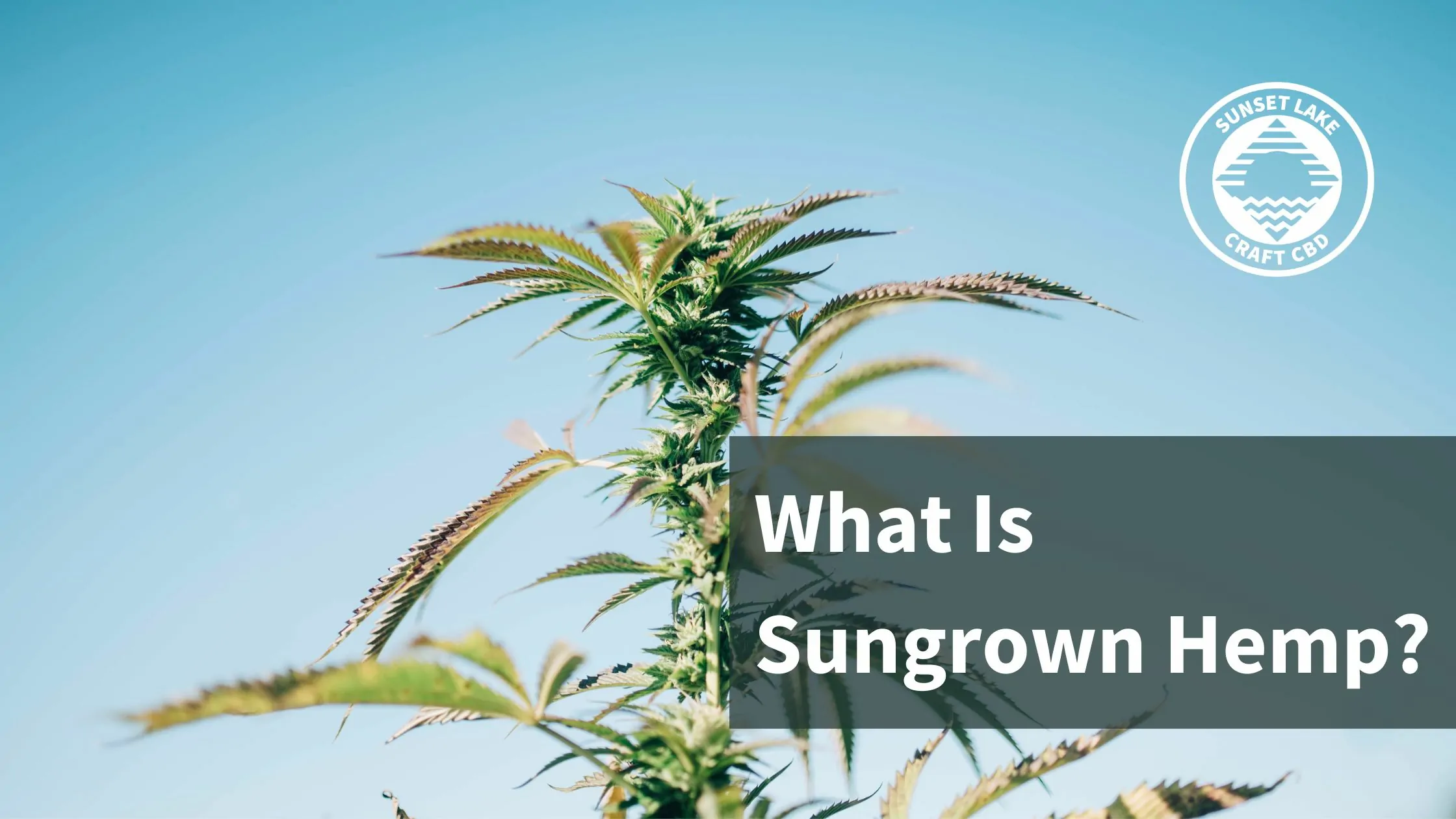No products in the cart.
CBD With A Conscience: What Is Sungrown Hemp?

What are the driving factors behind your CBD purchases? Is it the price? The potency? Or perhaps it’s company culture? We’ve asked Sunset Lake CBD customers over the years why they’ve supported our farm, and we’re thrilled to see that a growing number of folks are choosing us because of not only our prices and craft quality but our sustainable farming practices and sungrown hemp. So we’ve decided to start a new series to talk about what we do and how we do it.
Sunset Lake CBD has been harvesting sungrown hemp since our founding. We’re proud of the results and in this post, we’ll talk about what sungrown hemp means and why we do it.
What Is Sungrown Hemp?
Sungrown (or sun-grown) hemp is grown outdoors, planted in the soil, and subject to the sun. That might sound obvious, but “sungrown” isn’t interchangeable with the term “outdoor.”
According to evolving industry terminology, sungrown hemp is a subcategory of outdoor hemp. “Outdoor” is an umbrella term that can refer to hemp grown in greenhouses, hoop houses, in the soil, in containers, and even subjected to light deprivation. Essentially any hemp that isn’t grown and finished inside under artificial lights can be considered outdoor hemp.
Sungrown hemp on the other hand is exposed to the elements, grown in-ground with natural fertilizers, and subjected to the local area’s terroir.
Benefits of Sungrown Hemp
As a conscientious shopper, you care about the quality and environmental impact of the products you consume. You choose lovingly-grown organic food over food grown under harsh lighting and filled with artificial fertilizers. Why would your hemp be any different?
Environmental Impact
Indoor (and some outdoor) hemp cultivation draws massive amounts of energy and emits nearly 25 times more carbon dioxide per gram of hemp compared to sungrown hemp. We can attribute this eyepopping disparity to the power needed for growing lights, air flow, heating, cooling, water purification, and more.
Sungrown hemp needs almost none of the above. It uses the elements, the living soil, and some organic fertilizer to produce more flower per plant than indoor cultivation.
Potency
It’s long been believed that hemp plants grown indoors produce the most potent flowers. It’s true to an extent— hemp can be manipulated into producing higher concentrations of a specific cannabinoid. But on the whole, sungrown hemp has been found to produce more cannabinoids overall making for a more complete experience.
Read more: CBD With A Conscience: Is Sungrown Hemp More Potent Than Indoor?
Price Point
Because indoor hemp cultivation uses so much power to produce average per-plant yields, it’s usually more expensive than outdoor and sungrown hemp.
When properly maintained, sungrown hemp plants will produce more grams of usable flower than indoor hemp plants. This is because indoor plants are subjected to more limiting factors like light, root space, and nutrient deficiencies. Larger yields translate into lower prices for consumers once sungrown hemp farmers crop out for the season.
Potential Challenges
Just like any outdoor agriculture, sungrown hemp doesn’t come without its own set of challenges.
Weather
Unlike indoor cultivation, sungrown hemp is exposed to all of the elements and has been known to be toppled by strong winds and heavy rain. But what doesn’t kill hemp usually makes it stronger.
When hemp is exposed to the elements it will put more energy into its foundation and immune system much like how exercising helps us stay healthy and in shape.
Pests
Pests are a part of life. Luckily for us farmers, pests also have hungry predators. At Sunset Lake CBD we use predators (called beneficial insects) like ladybugs and assassin bugs to eat the pests that would otherwise harm our hemp. This is what we call an integrated pest management system and it allows us to keep the pest population down while also helping us keep our hemp pesticide free.
Molds and Mildews
Yes, while sungrown hemp is exposed to and can harbor unwanted mycotoxins, it’s a myth that only outdoor hemp can contain mold. Indoor hemp is just as, if not more sensitive, to molds and mildews.
If you want to avoid harmful molds and mildew, you should get your hemp from a licensed farm that can provide you with certificates of analysis and testing to show you that what you’re buying is clean and safe.
You Decide
At the end of the day, your hemp preferences are up to you to decide. Do you prefer indoor hemp or sungrown hemp?
All of Sunset Lake CBD’s hemp flower is sungrown to preserve cannabinoids, terpenes, and flavor. If you’re unsure about whether or not our hemp is right for you, check out some of our reviews.
